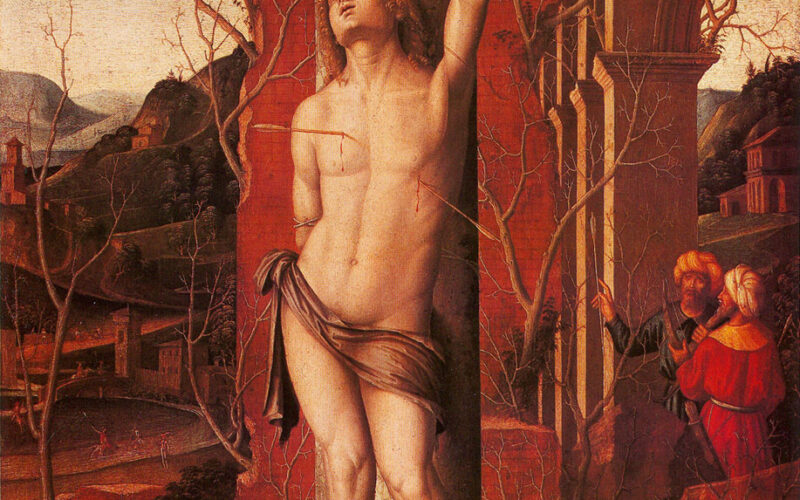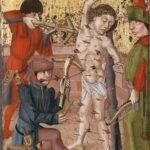Saint Sebastian: A Lasting and Recognizable Figure in Christian Iconography
Saint Sebastian is one of the most enduring and recognizable figures in Christian iconography, whose representation in painting has evolved significantly over the centuries. From a clothed martyr to a heroic nude, his depictions encompass a wealth of symbolism and meaning.
The saint’s attributes, such as the column he is tied to and the arrows that pierce him, are key elements of his iconography. Saint Sebastian is traditionally depicted bound to a column or stake, martyred for his faith. The arrows, the instruments of his martyrdom, have become a universal symbol of his suffering and devotion.
In early depictions, Saint Sebastian was usually clothed. However, during the Renaissance, the trend shifted towards representing the saint as a heroic nude. This change was partly influenced by the Renaissance admiration for the human form and physical beauty, as well as the intent to emphasize Sebastian’s suffering and vulnerability.
Art critic Vittorio Sgarbi’s interpretation of Saint Sebastian as a gay icon is an interesting perspective that is based on several observations. In many works of art, Saint Sebastian is depicted in languid, almost sensual poses. This representation may seem incongruous with the violence of his martyrdom but suggests another level of interpretation.
The depiction of Saint Sebastian can be seen as a celebration of male beauty and inner strength. His nudity, far from being simply an expression of suffering, can also be interpreted as an affirmation of the dignity and autonomy of the body. Furthermore, the saint’s languid pose can be seen as a subtle challenge to the gender and sexuality norms of the time, suggesting a fluid identity that goes beyond the rigid categories of masculine and feminine.
The interpretation of Saint Sebastian as a gay icon is, of course, subject to debate. However, it provides an example of how art can be reinterpreted in new and exciting ways, beyond the original intentions of the artist. Whether it is an intentional reading or not, the depictions of Saint Sebastian continue to fascinate and challenge, offering new perspectives on issues of identity, beauty, and courage.












